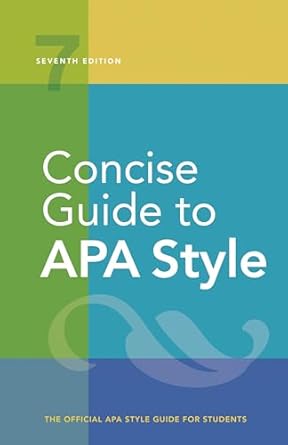[toc]
mastering abbreviations a guide for academic writing
Concise Guide to APA Style: 7th Edition (OFFICIAL)
Page 136 Review
Understanding Abbreviations in Academic Writing: A Detailed Commentary
This excerpt from an ebook delves into the proper use of abbreviations in academic writing, providing clear guidelines for their introduction and application.
The text emphasizes consistency and clarity, ensuring that abbreviations enhance rather than hinder comprehension.
Let’s break down the key points covered in this section.
Defining Abbreviations in Text
The cornerstone of this guidance is the principle of defining abbreviations upon their first use.
As the text explicitly states: “When you first use a term that you want to abbreviate in the text, present both the full version of the term and the abbreviation.” This is a crucial step in ensuring that readers unfamiliar with the abbreviation can immediately understand its meaning.
For example, consider the term “attention-deficit/hyperactivity disorder.” The text prescribes that the first instance should be followed by its abbreviation in parentheses: “attention-deficit/hyperactivity disorder (ADHD).”
The rules change slightly depending on where the term is located. “When the full version of a term appears for the first time in a heading, do not define the abbreviation in the heading; instead, define the abbreviation when the full version next appears.” This approach prioritizes the readability of headings while still ensuring clarity within the text body.
However, there’s an exception: “Use abbreviations in headings only if the abbreviations have been previously defined in the text or if they are listed as terms in the dictionary.”
Special attention is given to parenthetical text and citations. “When the full version of a term first appears in parenthetical text, place the abbreviation in square brackets after it.
Do not use nested parentheses.” So instead of: (i.e., attention-deficit/hyperactivity disorder [ADHD]).
Furthermore, “If a citation accompanies an abbreviation, include the citation after the abbreviation, separated with a semicolon.
Do not use nested or back-to-back parentheses.” Good example is “Beck Depression Inventory-II (BDI-Il; Beck et al., 1996).”
Abbreviations in Tables and Figures
The guidelines extend to tables and figures, reinforcing the principle of self-containment. “Define abbreviations used in tables and figures within each table and figure, even if the abbreviations have already been defined in the text.” This means that even if “ADHD” has been defined in the main text, it must be redefined within any table or figure where it appears.
The text provides options for how to define these abbreviations: “The abbreviation can appear in parentheses after first use of the term within the table or figure, including in the table or figure title, or the definition can appear in a table or figure general note or a figure legend.” The text emphasizes redundancy is important: “If an abbreviation is used in multiple tables and figures, define it in each table or figure.” However, there are exceptions, “Do not define abbreviations that do not appear in a table or figure.
Do not define or write out standard abbreviations for units of measurement and statistics in a table or figure (see Sections 6.10 and 7.15).”
Formatting Abbreviations
The excerpt also touches upon the proper formatting of abbreviations, specifically concerning plural forms. “To form the plural of most abbreviations and statistical symbols, add a lowercase “s” alone, without an apostrophe.” Therefore, we should use “DOls” not “DOI’s” or “DOIs”.
Key Takeaways
- Always define abbreviations upon their first use in the text.
- Repeat definitions in each table and figure.
- Use lowercase “s” to form the plural of most abbreviations.
By adhering to these guidelines, writers can ensure that their use of abbreviations is both clear and consistent, contributing to the overall readability and credibility of their work.
Buy full ebook for only $18: https://www.lulu.com/shop/american-psychological-association/concise-guide-to-apa-style-7th-edition-official/ebook/product-rmzpq54.html?page=1&pageSize=4


Leave a Reply